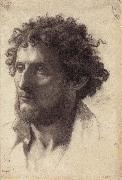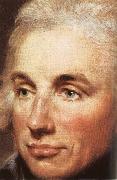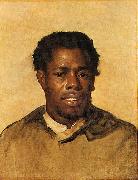
Oil On
Canvas, Real Flavor of Old Masters
|
WATTEAU, Antoine
|
|||
|
|
|||
| (1684?C1721). French painter of Flemish descent, b. Valenciennes. Until 1704 poverty forced him to work in the shops of mediocre artists, where he produced genre and devotional subjects. In 1704?C8 he studied in the studio of Claude Gillot, an adept painter of scenes of theatrical life, which later became the subject of some of Watteau's finest paintings, such as Love in the Italian Theatre and Love in the French Theatre (both: Berlin). In 1708?C9 Watteau worked with the decorator Claude Audran. Watteau attracted the attention of eminent patrons in his last years, including the comte de Caylus, his biographer, and in 1717 he was made a full member of the Acad??mie royale. The Embarkation for Cythera (1717; Louvre) is characteristic of his art; it is a delicate, courtly fantasy, represented in warm and shimmering pastel tones that place him among the great colorists of all time. A lyric, Giorgionesque quality pervades his airy, gay, and sensuous scenes, which have a poignancy that none of his followers attained. Out of the most fleeting aspects of life he created an enduring and individual art. His exquisite paintings influenced fashion and garden design in the 18th cent. Other outstanding works include Gilles (Louvre), Perspective (Mus. of Fine Arts, Boston), Mezzetin (Metropolitan Mus.), and Gersaint's Shop Sign (1719; Berlin). | |||
|
|
|||
|
|
Head of a Man WATTEAU, Antoine15.jpg Painting ID:: 7147 Visit European Gallery |
Red and black chalk, 14,9 X 13 cm Metropolitan Museum of Art, New York | |
Height Width |
INS/CM |
||
|
X |
|
||
|
|
|||
|
Edgar Degas
|
|||
|
|
|||
| French Realist/Impressionist Painter and Sculptor, 1834-1917 French painter, draughtsman, printmaker, sculptor, pastellist, photographer and collector. He was a founder-member of the Impressionist group and the leader within it of the Realist tendency. He organized several of the group exhibitions, but after 1886 he showed his works very rarely and largely withdrew from the Parisian art world. As he was sufficiently wealthy, he was not constricted by the need to sell his work, and even his late pieces retain a vigour and a power to shock that is lacking in the contemporary productions of his Impressionist colleagues. | |||
|
|
|||
|
|
Head of a Man new18/Edgar Degas-654273.jpg Painting ID:: 49200 Visit European Gallery |
mk194 1858 | |
Height Width |
INS/CM |
||
|
X |
|
||
|
|
|||
|
Lemuel Francis Abbott
|
|||
|
|
|||
| 1760-1803 Lemuel Francis Abbott Locations English painter. He was the son of a clergyman and went to London to study with Francis Hayman shortly before the latter death in 1776; he may have completed his studies in Derby with Joseph Wright of Derby. By the early 1780s Abbott had established a busy portrait practice in London. The formula he adopted for most of his head-and-shoulder portraits can be seen in Sir William Herschel (1785; London, N. Mar. Mus.): the body is parallel to the picture plane, and the sitter head is moved into three-quarter profile, as if his attention has been suddenly distracted. In later portraits, such as those of fellow artists Francesco Bartolozzi (c. 1792; London, Tate) or Joseph Nollekens (c. 1797; London, N.P.G.), the sitter hand or some attribute balances the movement of the head. Only male portraits by Abbott are known, and his patrons were mostly drawn from the professional classes, particularly the Navy; there are several versions of Lord Nelson (e.g. 1798; London, N. Mar. Mus.). His style is crisp but scratchy in technique, and often the anatomy of his figures is inaccurate. Paint is handled in a manner comparable with that of Gainsborough Dupont, but Abbott sense of composition is superior. In 1798 he was certified insane, but he continued to exhibit at the Royal Academy in London for two further years. Several of his works were probably finished by another hand. | |||
|
|
|||
|
|
Head of a man new19/Lemuel Francis Abbott-559387.jpg Painting ID:: 52757 Visit European Gallery |
mk223 oil on canvas | |
Height Width |
INS/CM |
||
|
X |
|
||
|
|
|||
|
John Singleton Copley
|
|||
|
|
|||
| American Colonial Era Painter, 1738-1815 John Singleton Copley (1738[1] - 1815) was an American painter, born presumably in Boston, Massachusetts and a son of Richard and Mary Singleton Copley, both Irish. He is famous for his portrait paintings of important figures in colonial New England, depicting in particular middle-class subjects. His paintings were innovative in their tendency to depict artifacts relating to these individuals' lives. | |||
|
|
|||
|
|
Head of a Man new20/John Singleton Copley-243364.jpg Painting ID:: 58443 Visit European Gallery |
Head of a Man (c.1777) | |
Height Width |
INS/CM |
||
|
X |
|
||
|
|
|||










